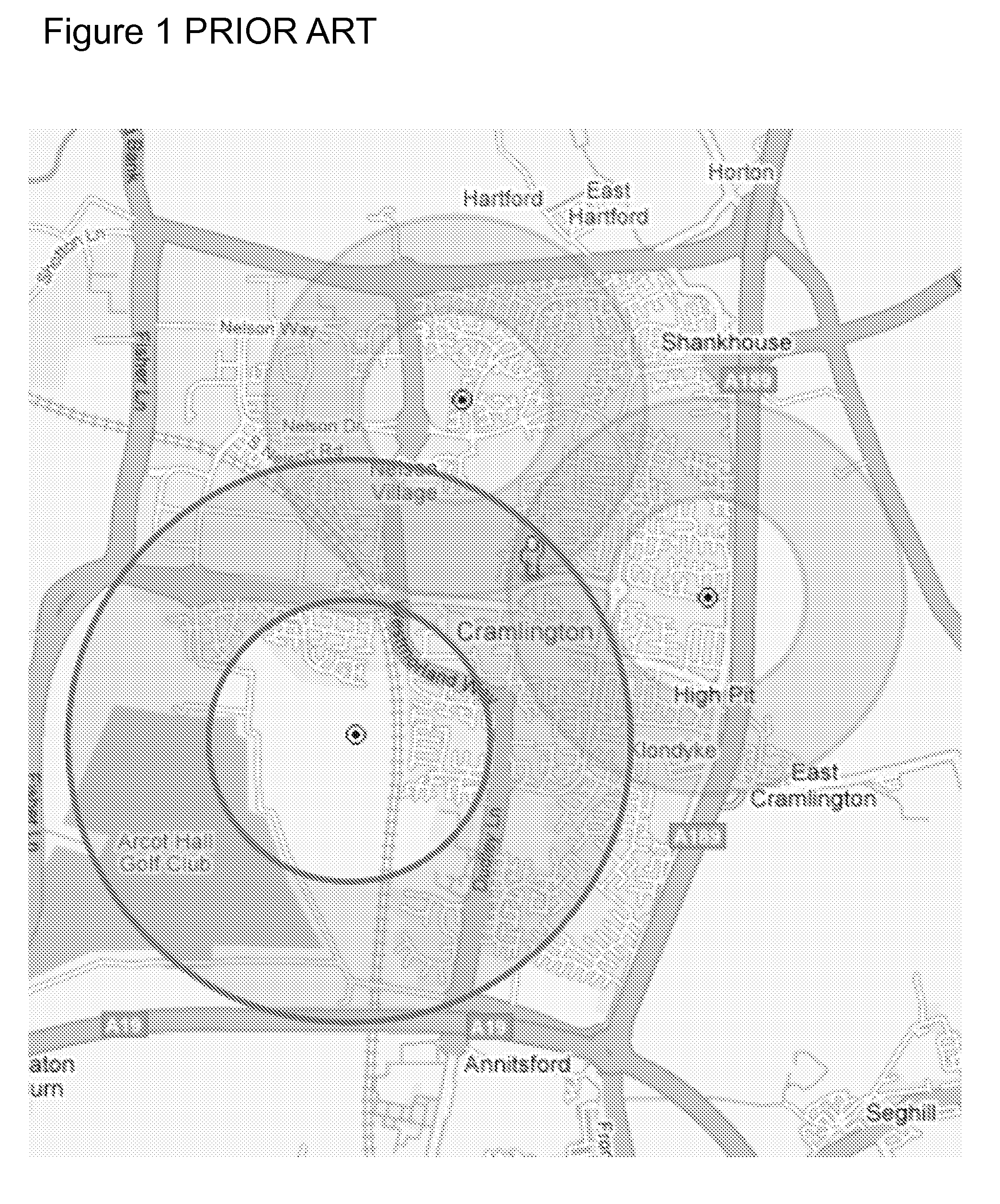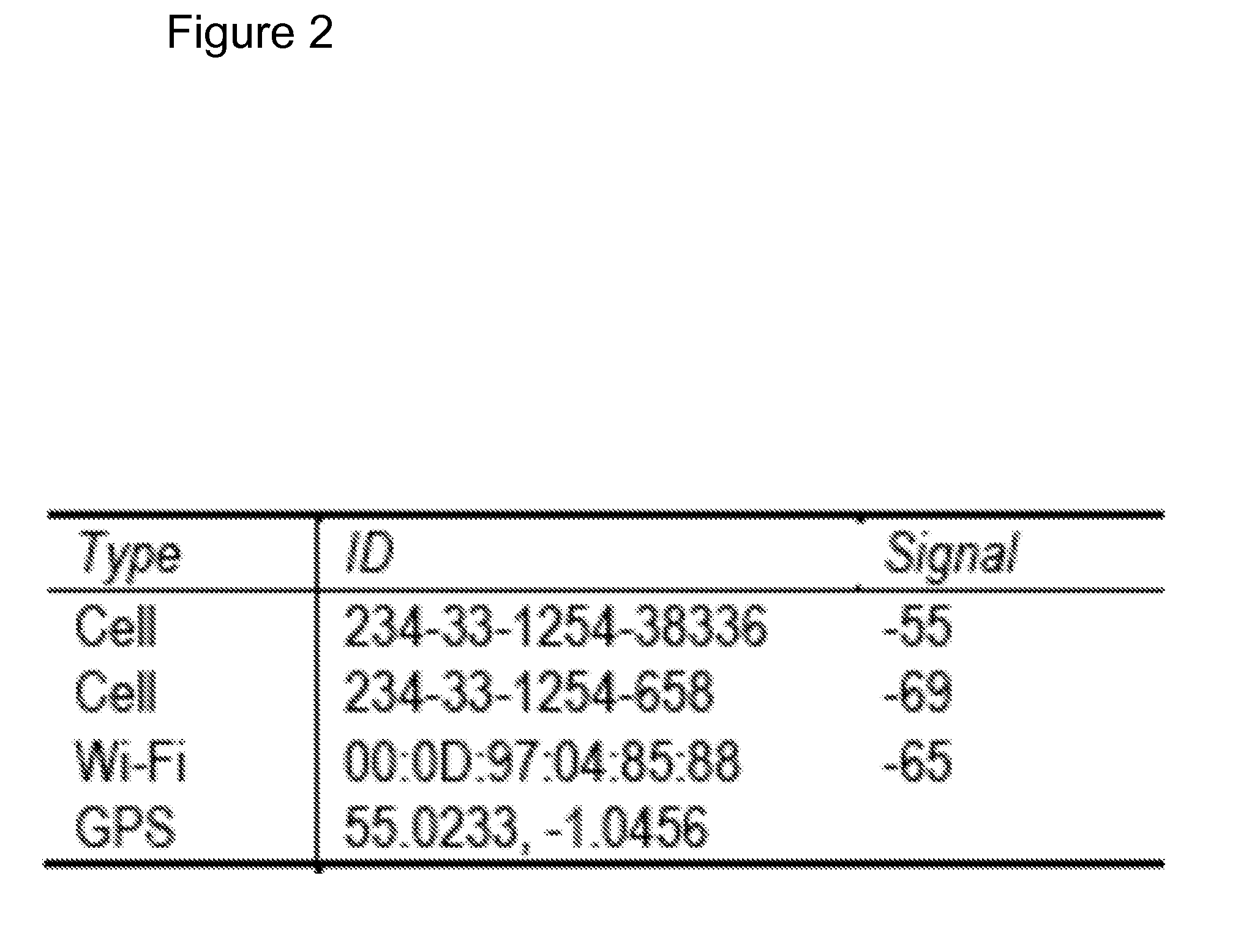Method of building a database of mobile device beacon locations
a mobile device and location technology, applied in the field of building a database of mobile device beacon locations, can solve the problems of not all operators offering location application programming interfaces, not being able to determine the position of devices, and not being able to meet the needs of real-time tracking of a large user base,
- Summary
- Abstract
- Description
- Claims
- Application Information
AI Technical Summary
Benefits of technology
Problems solved by technology
Method used
Image
Examples
example 1
A user is driving down the A1 national route in England. She passes a known cell, followed by two unknown cells, before sighting another known cell.
Result:
The algorithm assumes that the unknown beacons are spaced equidistantly on the geodesic line between the known beacons. This is shown in FIG. 4.
example 2
Scenario: The unknown beacons from the previous example are once again sighted, by a GPS-enabled device at the user position indicated in the right hand side of FIG. 5. Result: The algorithm refines the estimates for the unknown nodes based on the new information, giving an optimal layout for the mesh. This is shown in FIG. 5.
example 3
Visualisation of data collected from a single journey from Cramlington to Ponteland in England. Circular nodes were previously known. Square nodes show estimated positions for sighted nodes. This is shown in FIG. 6.
Expectations
The system will work internationally, across all operators. It can quickly and autonomously learn enough data to provide inaccurate estimates of the user's general area. As more data is fed into the system, the accuracy of the data will improve significantly. To speed up the process, the database can be seeded by:Operator LBS requests when stuck (no sighted cells are known)Taking data from the Google Maps Mobile Cell Identification (ID) database (we reverse engineered the protocol)GPS enabled devices, such as a handful of GPS enabled devices
PUM
 Login to View More
Login to View More Abstract
Description
Claims
Application Information
 Login to View More
Login to View More - R&D
- Intellectual Property
- Life Sciences
- Materials
- Tech Scout
- Unparalleled Data Quality
- Higher Quality Content
- 60% Fewer Hallucinations
Browse by: Latest US Patents, China's latest patents, Technical Efficacy Thesaurus, Application Domain, Technology Topic, Popular Technical Reports.
© 2025 PatSnap. All rights reserved.Legal|Privacy policy|Modern Slavery Act Transparency Statement|Sitemap|About US| Contact US: help@patsnap.com



